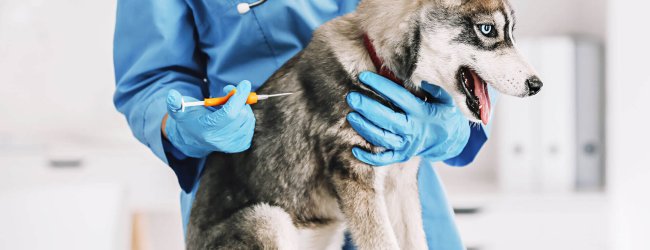Why Do Cats Eat Grass? And When Is It A Big Deal?
As weird as it might seem, this behavior is actually pretty normal - most of the time, at least. So here's why cats eat grass & how you can keep them safe when they're out and about.
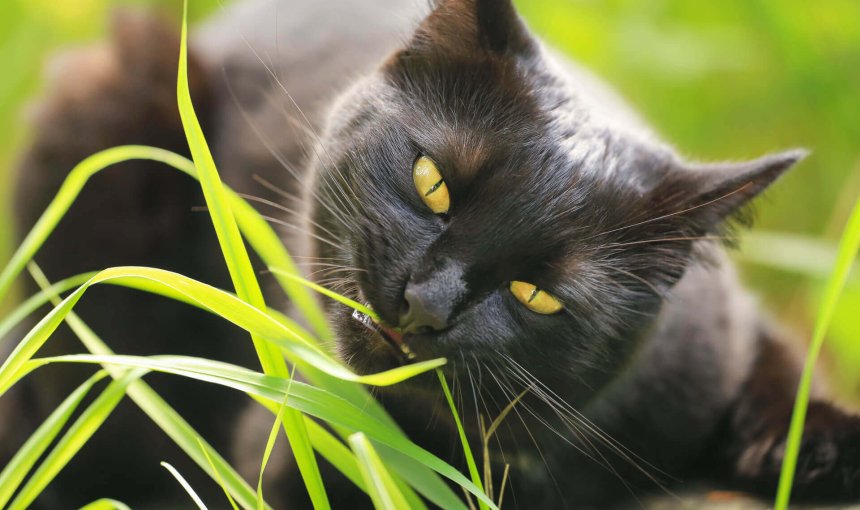
Fact: when you live with a cat, you’ll come across some question-raising behaviors – especially when it comes to what they put in their mouths. Which might include your leftovers, the odd plant or two…and grass? Why do cats eat grass? Is it safe – and how do I prevent them from eating grass that’s been sprayed with pesticide or something toxic? Here are some of the reasons why and how keeping tabs on your cat’s whereabouts can help prevent an emergency.
Key Takeaways
Common reasons why cats eat grass include helping them improve digestion and obtain essential vitamins and minerals such as folic acid.
Common dangers include grass sprayed with pesticides or toxic plants. You could redirect your cat’s grass-eating to safe alternatives, like oats, wheat, and barley.
Head to your vet if your cat seems to be eating grass daily or even vomiting blood after eating grass. These could signal underlying digestive issues or toxin ingestion.
A smart cat tracker with real-time GPS tracking can help you keep tabs on your cat’s location in real-time – plus set up “safe zones” or “no go zones” to keep them away from pesticide-riddled areas.

Find out where your cat spends their time.
Read more- Key Takeaways
- Do cats eat grass in the first place?
- Why do cats eat grass?
- Cat eating grass: What risks to consider
- When you should be concerned about your cat eating grass
- Tips to keep your grass-eating buddy safe outdoors
- How to create your very own cat grass garden at home
- Where a smart cat collar can help prevent an emergency
Do cats eat grass in the first place?
Yup, it’s official – cats do eat grass. You’ve likely already seen this from your own furball. But now, thanks to a survey from the University of California Davis Veterinary School of Medicine, you can see the bigger picture too:
- 89% of cats ate grass six or more times throughout their lives
- 91% of the time, cats appear in good health before eating grass
- 27% of cats vomit frequently after eating grass or other foliage1
This shows that nearly all cats eat grass – and are typically A-OK when doing so.
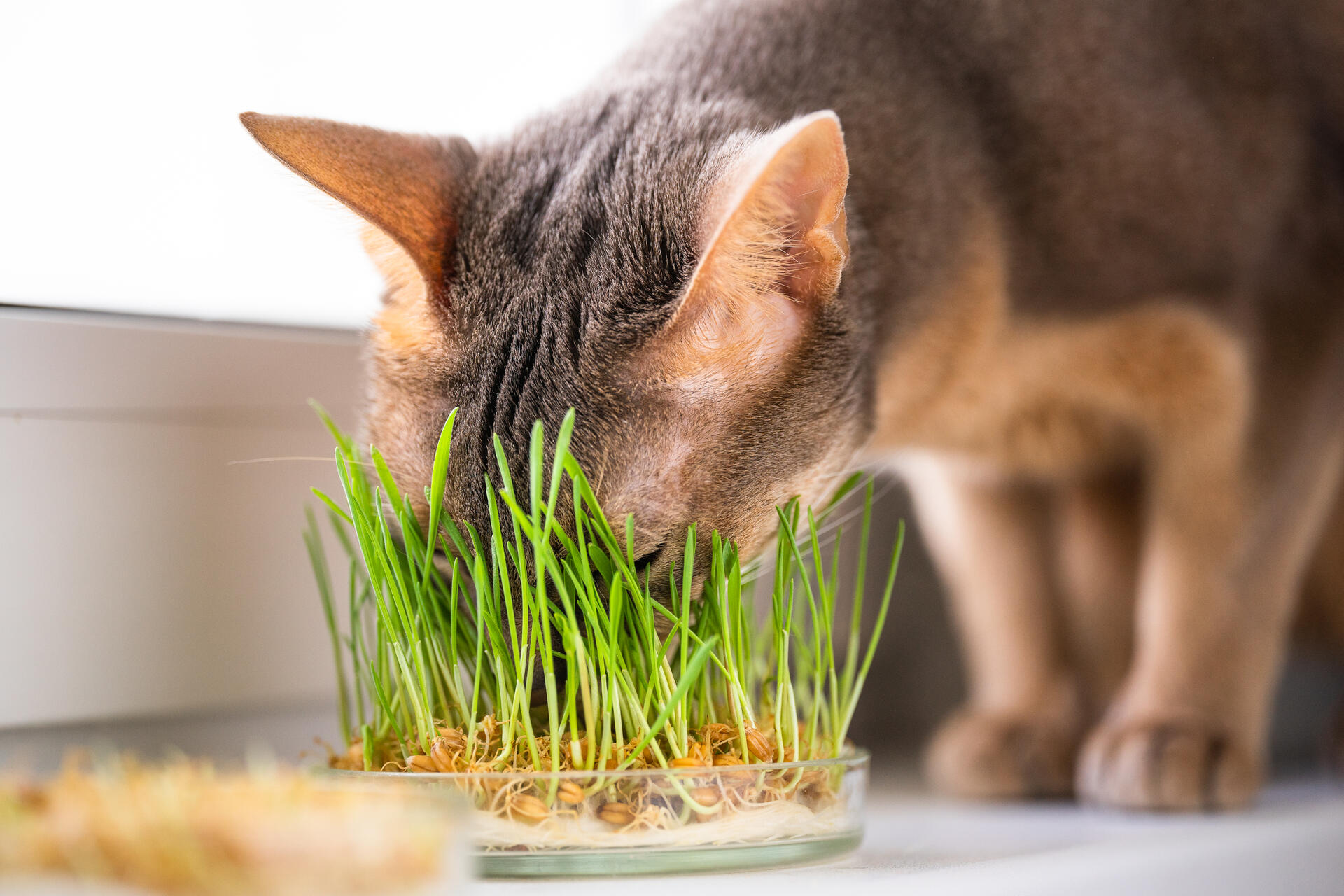
Why do cats eat grass?
In short, cats eat grass because its comes naturally to them and can support their health. (In the same way eating leafy greens helps us humans stay healthy.) A widely-believed (but not 100% accurate) explanation for why cats eat grass is that it helps them vomit if they got sick or poisoned. But that’s not always the case. In fact, cats actually lack the stomach enzymes needed to break down and digest grass. As a result, it sometimes… comes back up. And together with it comes other stuff they can’t digest, like hairballs or inedible parts of prey such as fur or bones.
The fiber found in grass can actually help your cat digest food better and relieve themselves easier. It may also include vitamins and minerals, including folic acid (B9) that they may not be getting from elsewhere.
Finally, anxious or stressed cats may find that chomping on grass helps calm their nerves. A bit like chewing gum for felines. In fact, researchers have found that, after eating grass, most cats do not throw it up – or show any signs of illness.2 Meaning, cats can be purrfectly healthy, and still eat grass.
Finally, one of the primary reasons your cat’s eating grass may be rooted in their evolutionary history.3 In many ways, your cat’s digestive system, appetite, and instincts haven’t changed much from their wild ancestors’. And in nature, wild cats do tend to eat grass after they’ve eaten prey – which may cause them to vomit out the indigestible parts of the food they’ve just eaten. (Including intestinal parasites.)
Cat eating grass: What risks to consider
It’s a different ball game altogether if your cat has been eating grass that’s been sprayed with toxic chemicals like weed killer or pesticides – and throwing up as a result. In fact, common garden plants like azaleas, lilies, and orchids all count as plants that are poisonous to cats. (And mean hefty vet bills from cats simply coming in contact with them!)
That’s why we’d always recommend you keep tabs on where your cat’s been nibbling on grass – and whether these areas count as “danger zones” instead. (Like your neighbors’ pesticide-strewn backyards, for example.)
💡It’s why cat parents around the world – just like you – are strapping GPS trackers to their buddies’ collars. Especially if you’ve got an outdoor cat…or just one that’s figured out where they can sneak out of your house or backyard.
When you should be concerned about your cat eating grass
Now in general, if your cat takes a nibble or two every so often, there’s really no cause for concern. Just keep in mind that outdoor cats tend to have sizable territories to patrol and defend, which might include multiple neighborhood backyards and even the local park. Which can increase their risk of accidentally ingesting a plant or grass that might be poisonous for them.
So keep an eye out and drop a line to your vet if your cat eats grass every day, which could signal digestive trouble. In fact, the more digestive trouble your cat has, the more they might chew on grass to clear out their systems. Signs like blood in your cat’s vomit could mean they’ve ingested toxins from pesticides or chemicals outdoors.
Tips to keep your grass-eating buddy safe outdoors
If you have a garden (a.k.a. your cat’s mini-empire) make sure it’s a cat-friendly one. Do your best to avoid using insecticides or herbicides. Check for any toxic plants that might be growing there (which we cover in a bit more detail further below.) Besides, you could also:
1. Give cat grass a whirl
You could redirect your cat’s grass-eating towards a safer alternative. Aka, cat grass. “Cat grass” refers to specific plants that are safe for cats to nibble and chew on. Including oat, barley, and wheat. All are available at most pet stores. Though you can also grow these yourself in pots or outside – a fancy alternative to the greens sprouting next to busy roads or on dog-marked territory. Typically, cat grass varieties grow quite fast, are easy to take care of, and thrive in both indoor and outdoor environments.
Cat grass is also generally considered safer for cats to eat than outdoor grass. This is because regular grass outside might contain trace amounts (or more) of pesticides and other toxic substances like snail bait. So if your cat has the tendency to nibble on grass after meals, cat grass is an excellent safe option.
Usually, your local pet store will have cat grass kits, which include seeds, soil, and a potting container. So all you need to do is to water them regularly and provide ample sunlight. Within a week or so, your cat will have their own safe little garden of nibbles. Meaning you can redirect them away from your houseplants or other flowers, which may be poisonous to them.
2. Do a “plant audit”
If you keep your cat indoors, make sure to provide them with cat grass as well and remove all toxic plants that they might nibble on. Whether your cat spends a lot of time outdoors or indoors, it’s useful to know this list of common toxic plants:
- Amaryllis
- Dieffenbachia (also known as Dumb Cane)
- Lilies
- Heartleaf Philodendron (also known as horsehead philodendron)
- Aloe plant
- Sago palm
The list goes on, so make sure all your plants are non-toxic to cats before bringing them home. Because even a bite, lick, or taste from one of these can induce anything from stomach bleeding to liver failure – if not worse!
💡Here’s a list of easy indoor plants that are safe for cats – so you can create an elegant green space in your home that also keeps your feline friend happy.
3. Try catnip for a change
Cat grass and catnip might sound similar, but they’re both completely different plants.3 Catnip (Nepeta cataria)is a member of the mint family. It contains a compound called nepetalactone, which can have different effects on your cat. When they encounter catnip, either by sniffing, licking, or playing with it, cats might show signs of hyperactivity or roll around, rub themselves against you, or purr excessively. In other cases, it can also make them more relaxed. Catnip’s effects usually pass naturally after around 10-15 minutes and are not harmful to most cats. But do make sure your cat isn’t over-exposed to it, since they may be overstimulated.
Both catnip and cat grass are safe for cats to consume. Besides this, you can safely plant catnip around your cat grass to keep it safe from insects. This is because catnip is a naturally pest-repelling plant while also being non-toxic for both cats and dogs.
How to create your very own cat grass garden at home
- Choose an easy, low-maintenance grass
Oat grass is an excellent, time-saving option. It grows faster than other grasses, which makes it a great snack for your cat. So head on over to your local garden center or pet store and pick up some seeds. (Just be sure to double-check the label and keep an eye out for any weird ingredients.) - Use a pot, try, or even a shallow dish to plant your seeds
Just make sure it has drainage holes to prevent water from gathering (as this might cause mold or mildew.) If your container has a lid, it can help the grass retain moisture and grow quicker. - Add soil, whether it’s potting soil or soil mixed with sand
Fill your container to about three-fourths full and add a little bit of water. - Plant the seeds
By sprinkling them evenly over the soil. Make sure they’re not too close together. Cover them with a thin layer of soil and press down gently. - Water the soil gently
To help the planted seeds settle. - Cover your container with a plastic wrap or lid
To keep the moisture within. - Place your container in a location that gets some natural sunlight
Like your kitchen windowsill.
Over the next few days, continue watering the soil gently to keep it moist. Be mindful of how much water you’re pouring as the grass begins to grow. You want to avoid making it too dry or too wet. If you notice any mold or mildew from too much water, remove the lid. Allow the soil to dry out by itself before you water it again.
And tada! Within a week or so, you’ll have a lovely pot of cat grass that’s grown to around 3-4 inches. The perfect fiber-rich snack for your feline friend.
Where a smart cat collar can help prevent an emergency
Cats eating grass is totally normal, but when they’re out exploring, they can stumble into some pretty risky situations. That’s where a smart cat collar, like the Tractive GPS & Health Tracker, comes in super handy. It’s like having an extra set of eyes on your cat, combining real-time GPS tracking with Health Monitoring. This means you can keep them safe, stop them from wandering into dangerous spots (hello, pesticides!), and even catch potential health issues early on.
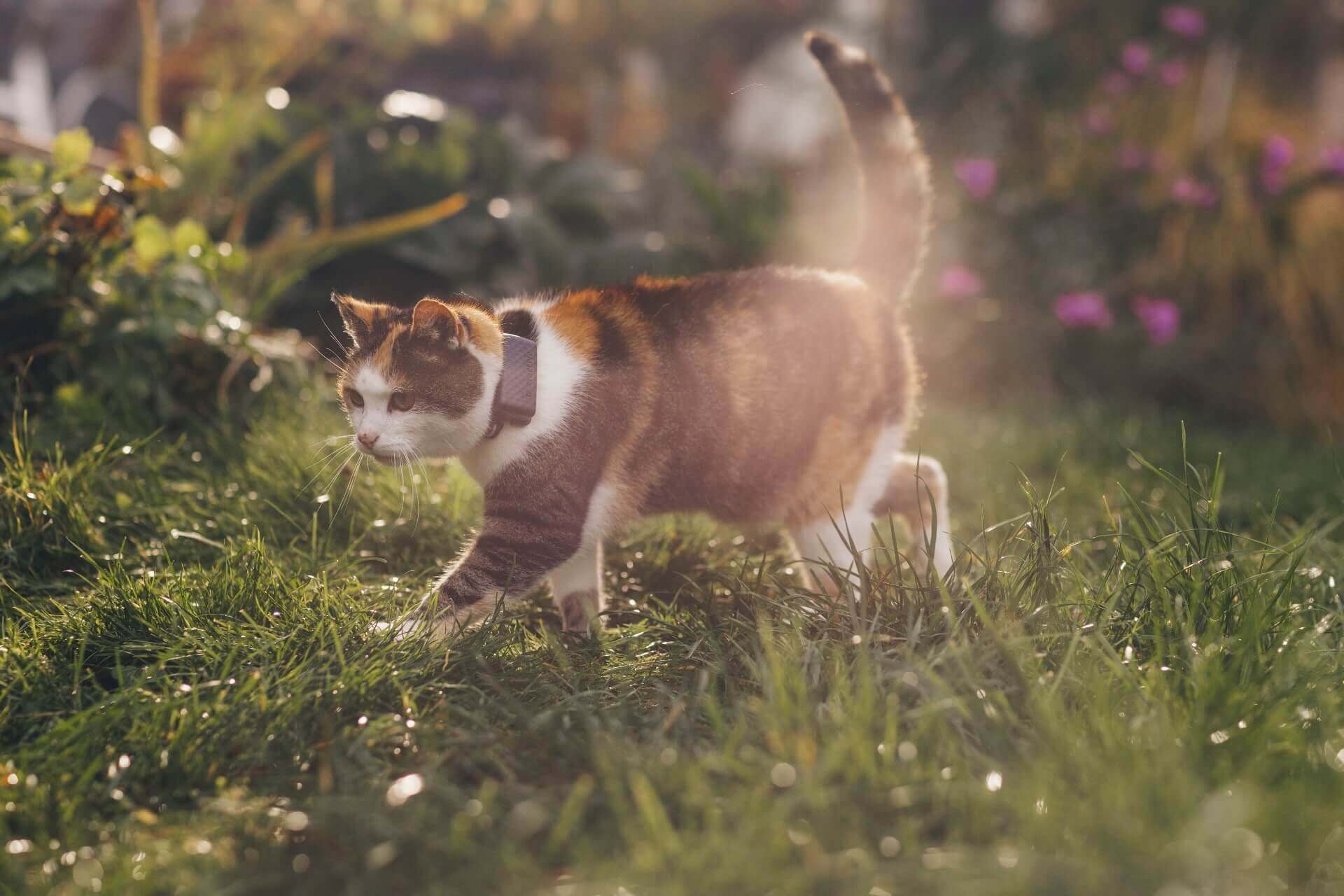
Strapped to your cat’s collar, you can now:
- Track your cat’s movements in real-time
Tractive’s LIVE tracking shows you exactly where they are on a map, updating every couple of seconds. So if they decide to explore a busy street or a neighbor’s yard that might have been sprayed, you can find them in a flash. Better yet, unlike an AirTag, Tractive devices don’t need a network of compatible devices to work. - Get alerted if your cat leaves your home or backyard
You can set up “safe zones” around your home or yard from your Tractive mobile app. If your cat steps outside these virtual boundaries, you’ll get an instant alert on your phone. This gives you precious time to scoop them up before they get lost or run into danger. You can even mark “no-go zones” to get an alert if they enter an area you want them to avoid.

- Figure out where your cat spends time throughout the day
Their Heat Map and Location History shows you their favorite spots and usual routes. This helps you understand their roaming patterns and anticipate any risks in their environment. - Spot potential health issues early
Tractive tracks your cat’s activity levels, like how much they’re moving and sleeping. Big changes in these habits – maybe they’re suddenly less active or can’t seem to sleep well – can be early signs of something going on, like pain or an illness. In these cases, your tracker will send you a Health Alert if it spots these unusual changes, prompting you to call your vet.
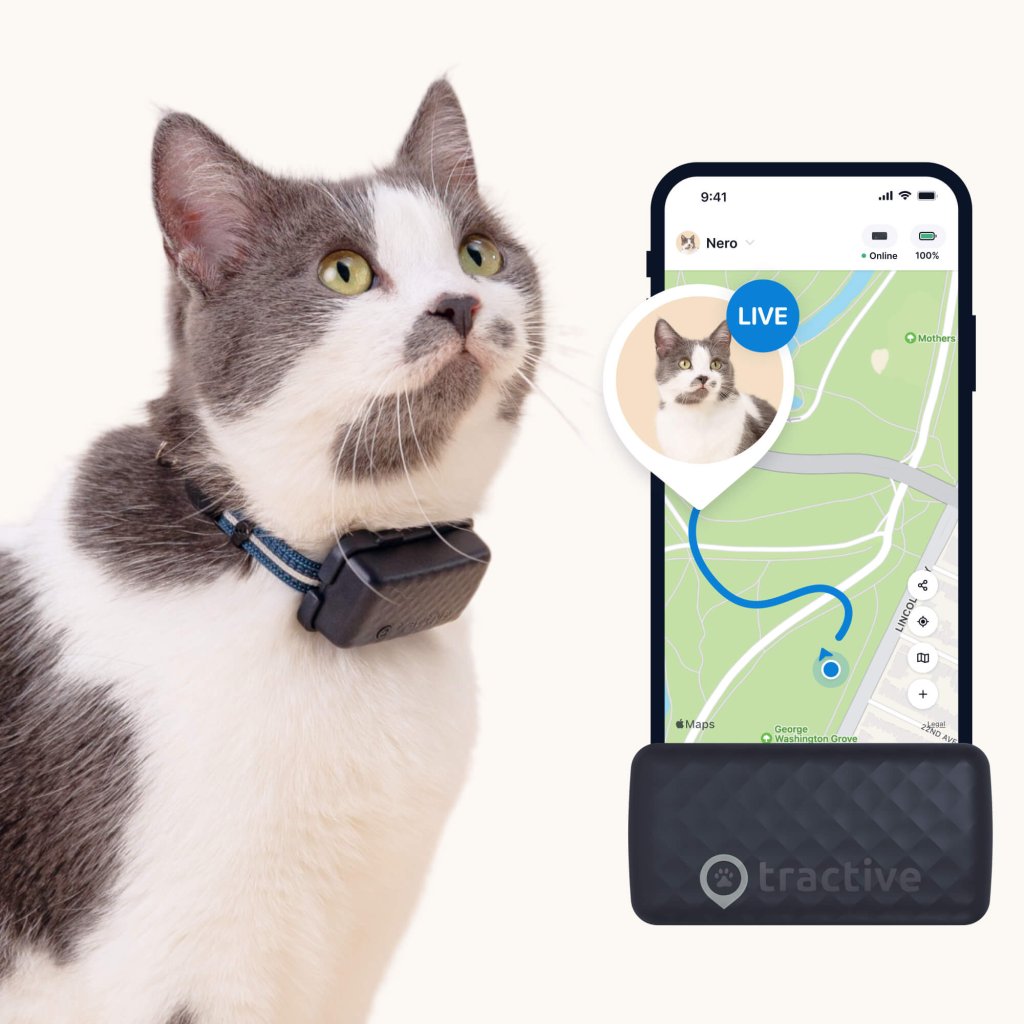
Track your cat wherever they go
See where they are in real-time, no matter how far they roam. Discover their territory. Get alerted if they go too far. Track activity, sleep, and receive health alerts if your cat’s activity changes. Keep your feline friend healthy and safe.
A Tractive collar isn’t just about immediate safety; it’s about keeping tabs on your cat’s overall well-being. By staying in the loop about their movements and activity, you can head off potential dangers and health concerns, leading to a much happier, healthier, and safer life for your beloved cat.
And if you’ve like this post, share it with a friend or a loved one – and let’s help build a safer, kinder world for our furry friends together.
